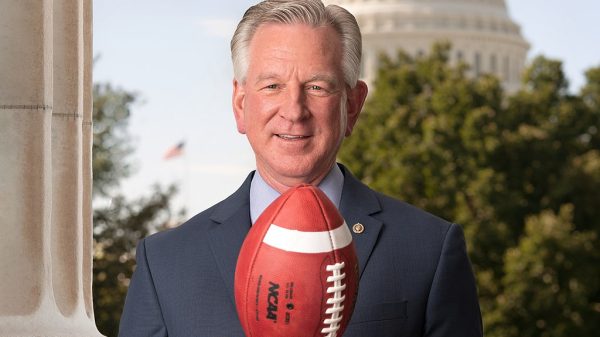By Brandon Moseley
Alabama Political Reporter
On Thursday, December 4, NASA is set to launch the Orion spacecraft into orbit for the first time. On Wednesday, December 3 U.S. Senator Richard Shelby (R) told the Alabama Political Reporter that the Orion test launch is an important step.
Senator Shelby said in a written statement in response to APR’s inquiry, “The Orion test launch is an important step for the future of space exploration and an exciting event given North Alabama’s long-standing role in our nation’s space program. I am confident that the Orion launch will be successful and that NASA will continue to make progress on a launch system that will enable NASA’s deep space exploration goals.”
The Orion spacecraft will go into space for the first time on top of a United Launch Alliance (ULA) Delta IV Heavy launch vehicle at Space Launch Complex 37 at Cape Canaveral Air Force Station (CCAFS) in Florida on Thursday.
Orion will launch for the first time, without a crew. The launch is scheduled for 7:05 a.m. EST. The window for launch is two hours 39 minutes. NASA TV launch commentary of the flight, designated Exploration Flight Test-1, begins at 4:30 a.m. and will continue through splashdown in the Pacific Ocean approximately 600 miles southwest of San Diego.
Orion will orbit the Earth twice during its 4.5 hour trip and travel to an altitude of 3,600 miles into space. The flight will test the risk to astronauts and will provide critical data needed to improve Orion’s design and reduce risks to future mission crews.
Mission Description: The flight will take Orion to an altitude of approximately 3,600 miles above the Earth’s surface, more than 15 times farther than the International Space Station’s orbital position. By flying Orion out to those distances, NASA will be able to see how Orion performs in and returns from deep space journeys.
Thursday will be the 28th Delta IV launch, and ULA’s 90th launch overall. The Delta IV is built in a factory in Decatur. Future Orion missions will be launched by the larger Space Launch System which is being designed, engineered, and tested in Huntsville at the Marshall Space Flight Center.
At one point NASA planned to use either the Delta IV or the Atlas V rocket to launch the proposed Orbital Space Plane, which eventually became the Crew Exploration Vehicle and then the Orion. Orion was intended to fly on the Ares I launch vehicle, then the Space Launch System after Ares I was cancelled.
NASA announced on Wednesday, August 27 that the Space Launch System (SLS) has passed a formal review by NASA officials and the program’s progression from formulation to development has been approved to proceed.
The SLS will be the most powerful rocket ever built for deep space missions. NASA plans to use the SLS to launch a craft to distant objects, including an asteroid and ultimately the planet Mars.
Since building the space shuttle in the 1970s and early 80s, NASA has started and then stopped other space exploration class vehicles. This is the first project to get this far in the process since the agency built the space shuttle.
NASA Administrator Charles Bolden said, “We are on a journey of scientific and human exploration that leads to Mars, and we’re firmly committed to building the launch vehicle and other supporting systems that will take us on that journey.”
The SLS will give NASA unsurpassed heavy-lift capability and unrivaled payload volume. This capability will allow NASA to take heavier loads into higher earth orbits than the space shuttle could ever go and is essential to human missions to explore asteroids and Mars.
In its first flight test, SLS will be configured for a 70-metric-ton (77-ton) lift capacity and will carry an uncrewed Orion spacecraft beyond low-Earth orbit. In its most powerful configuration, SLS will provide an unprecedented lift capability of 130 metric tons (143 tons), which will enable missions even farther into our solar system.
The SLS is designed to be flexible and evolvable to meet a variety of crew and cargo mission needs.
The decision to proceed comes after a thorough review known as Key Decision Point C (KDP-C), which provides a development cost baseline for the 70-metric ton version of the SLS of $7.021 billion from February 2014 through the first launch and a launch readiness schedule based on an initial SLS flight no later than November 2018.
Senator Shelby has been an outspoken proponent of NASA, Orion, and the Space Launch System.




















































